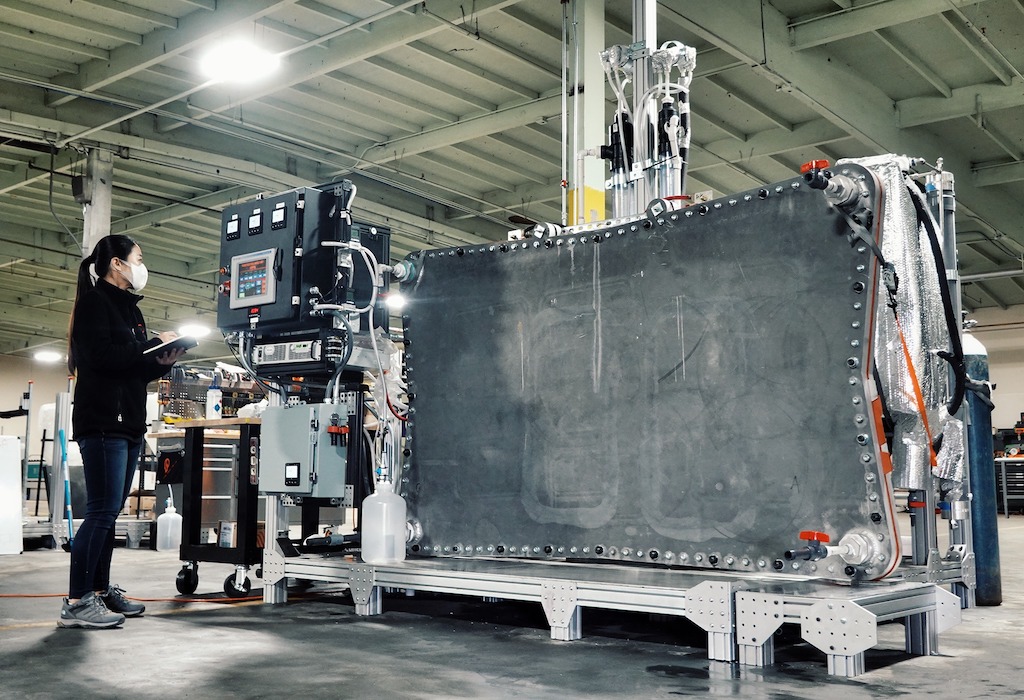
California just doubled down on carbon management while Washington backs away. Governor Gavin Newsom signed SB 614 into law on October 13, 2025, clearing the path for CO2 pipelines that will connect capture facilities to underground storage sites. The move comes as the Trump administration cancels billions in federal carbon removal funding, cutting at least 10 direct air capture hub projects and leaving the industry asking one big question: can state policy alone sustain a carbon market this ambitious?
The timing matters. While the Department of Energy pulls funding from DAC hubs in Texas and Louisiana, California is building out the very infrastructure those projects need. SB 614 authorizes dedicated carbon dioxide pipelines to transport captured emissions to permanent geological storage. It follows SB 905, passed in 2022, which set up the state's regulatory framework for carbon capture and storage projects.

"Carbon management is a critical pillar of California's world-leading efforts to cut climate pollution. I'm signing this legislation to put our state on the leading edge of an emerging 21st Century industry that will not only help us address the climate crisis but create good paying, skilled jobs."
Governor Gavin Newsom
Federal Funding Vanishes, State Funding Grows
The contrast couldn't be sharper. In early October 2025, the DOE canceled more than 300 clean energy grants totaling $7.5 billion, hitting direct air capture particularly hard. At least $47.3 million in DAC hub funding was terminated. Projects in Alaska, Kentucky, Louisiana, and North Dakota survived, but most blue-state hubs got cut.
Meanwhile, California committed real money. SB 840 allocates $85 million from the state's Greenhouse Gas Reduction Fund for the 2026-27 budget cycle, specifically targeting carbon capture, removal, and climate tech innovation. The fund draws from California's Cap-and-Invest program, which puts a price on carbon emissions and generates steady revenue regardless of what happens in D.C.
>> RELATED: Plan to Build California’s First Carbon Removal and Storage Project Gets a Big Boost

What the New Bills Actually Do
California passed a cluster of carbon-focused legislation in 2025. Each bill serves a distinct function, and together they form a policy infrastructure that could work without federal backing. Here's how they connect:
SB 614: Pipeline Authorization
This is the infrastructure bill. It allows companies to build dedicated CO2 pipelines, moving captured carbon from industrial sites or direct air capture facilities to underground storage formations. California previously had a moratorium on such pipelines. SB 614 lifts it, with safety standards and community input requirements built in. Senator Henry Stern authored the bill.
SB 905: Regulatory Framework (Passed 2022)
Before California could build pipelines, it needed rules. SB 905 established the comprehensive regulatory framework for carbon capture and sequestration. It set permitting requirements, safety protocols, and oversight mechanisms. SB 614 builds directly on this foundation.
SB 840: Climate Tech Funding
This bill directs $85 million toward carbon tech innovation and deployment. The money comes from Cap-and-Invest revenues, giving the state a funding source that doesn't rely on Congressional appropriations. Projects focused on carbon capture, removal, and related climate solutions can tap into this pool starting in the 2026-27 fiscal year.
AB 1207, SB 804, SB 643: Carbon Removal Integration
These bills, passed in September 2025, weave carbon dioxide removal into California's existing climate programs. AB 1207 makes CDR eligible as a compliance offset in the Cap-and-Invest system. SB 804 reauthorizes the Greenhouse Gas Reduction Fund and opens climate tech innovation funding to CDR projects. SB 643 creates a Carbon Dioxide Removal Purchase Program with $50 million allocated through 2035, requiring projects to demonstrate additional carbon removal and secure third-party purchases matching state grants.
Key Facts: California's Carbon Management Push
- $85 million allocated for carbon tech innovation in 2026-27
- $50 million dedicated to CDR projects through 2035
- SB 614 enables CO2 pipeline construction after years-long moratorium
- Cap-and-Invest revenue funds programs without federal dollars
- CDR now eligible for compliance offsets in California's carbon market
Can State Policy Replace Federal Support?
The real test isn't whether California's regulations are strong. It's whether they can generate enough private investment to scale carbon management without federal tax credits and grants. The 45Q federal tax credit offers up to $180 per ton for CO2 captured via direct air capture and stored geologically. That's substantial. California's compliance offset system pays less, and voluntary carbon markets remain volatile.
But California has advantages other states don't. The Cap-and-Invest program creates guaranteed demand for carbon offsets. Companies that exceed emissions limits must buy credits, and now carbon removal projects can supply them. That's a market, not a subsidy. It doesn't vanish when administrations change.

"This bill will ensure that California adopts best-in-class regulations for carbon dioxide pipeline safety through a public process that elevates community input while encouraging major investment in the clean energy transition of our most fossil fuel intensive industries."
Senator Henry Stern, SB 614 Author
The state also has geological advantages. California sits on significant underground storage capacity in depleted oil and gas fields and saline aquifers. Companies like Carbon TerraVault have been working on storage projects for years, waiting for infrastructure and regulatory clarity. SB 614 provides both.
Federal Instability Creates Opportunity
Strangely, federal chaos might help California. When the DOE canceled DAC hub funding, companies didn't stop working. CarbonCapture Inc. moved its pilot project from Arizona to Alberta, Canada. Other developers are looking at international opportunities or state-level partnerships. California now offers something Washington doesn't: predictability.
The Cap-and-Invest program extends through 2045. That's two decades of stable policy and funding. Companies building carbon removal projects need long-term certainty to justify capital investment. California provides it. The federal government, under any administration, doesn't guarantee funding beyond the current budget cycle.
There's also a competitive element. As federal support dries up, states that invest in carbon management infrastructure will attract projects, jobs, and private capital. California is betting it can become the national hub for carbon tech development. The state already hosts a growing number of startups, from Heirloom's enhanced mineralization systems to direct air capture innovators like Avnos.

>> In Other News: Triple Investments in Forests by 2030 to Reap Multiple Benefits, Says UN
The Economics Still Need to Work
Policy creates framework, but economics drive deployment. Carbon removal remains expensive. Most direct air capture systems cost between $200 and $600 per ton. Recent breakthroughs, like Prometheus Fuels' sub-$50 capture technology, are exceptions. To scale, costs need to drop significantly, and that requires volume deployment.
California's approach tries to address this by creating multiple revenue streams. Projects can earn compliance offsets, sell voluntary carbon credits, qualify for state grants, and potentially stack federal 45Q credits if they're still available. The CDR Purchase Program requires projects to secure third-party buyers, ensuring market validation before state money flows.
| Policy Mechanism | Function | Funding Source |
|---|---|---|
| Cap-and-Invest Program | Creates compliance offset demand | Carbon pricing revenue |
| SB 840 Climate Tech Fund | Supports innovation and deployment | $85M from GGRF (2026-27) |
| CDR Purchase Program (SB 643) | Direct procurement of carbon removal | $50M through 2035 |
| SB 614 Pipeline Infrastructure | Enables CO2 transport to storage | Private capital |
What Happens Next
California's carbon management ecosystem now has infrastructure authorization, funding mechanisms, regulatory framework, and market integration. The question is whether that's enough to sustain large-scale deployment without federal backing. Early indicators suggest it might be.
Several factors work in California's favor. The state's economy is massive, the world's fourth-largest. Its carbon market is mature and well-regulated. It has technical expertise, venture capital access, and a policy environment that rewards innovation. Companies building carbon projects know California's rules won't change dramatically every four years.
But challenges remain. Pipeline construction faces community opposition and safety concerns. Storage site permitting takes time. The voluntary carbon market, which many projects rely on, remains fragmented and price-volatile. And without federal tax credits, project economics get tighter fast.
The next 18 months will tell the story. If California can attract significant private investment, sign major carbon removal offtake agreements, and actually build out pipeline infrastructure, it proves state policy alone can support a carbon market. If projects stall waiting for clearer federal policy or better economics, it shows the limits of state action.
The Broader Implications
California isn't alone. Other states are watching closely. If this works, it creates a blueprint for state-level carbon management that doesn't depend on federal funding cycles. That could accelerate deployment nationwide, with states competing to attract carbon tech investment the way they compete for semiconductor fabs or EV battery plants.
The alternative is stagnation. Without federal support and without effective state policy, U.S. carbon management falls behind international competitors. Canada, the UK, and EU nations are all investing heavily in carbon capture and storage. China announced seven major CCUS projects in early 2025. If American companies can't access capital and infrastructure, they'll build elsewhere.
California's bet is simple: build it here, build it now, and prove it works. The state has the policy tools, the funding mechanisms, and the regulatory framework in place. Whether that translates into gigatons of carbon removal or just more studies and pilot projects depends entirely on execution and economics. The next chapter of American carbon management gets written in California, with or without Washington's help.
Subscribe to the newsletter
Daily decarbonization data and news delivered to your inbox
Follow the money flow of climate, technology, and energy investments to uncover new opportunities and jobs.
Latest issues
-
North America’s Carbon Removal Year in Review: Winners, Losers, Surprises
Inside This Issue 🌎 North America's Carbon Removal Year in Review: The Deals, Policies, and Milestones That Shaped 2025 🚢 Hapag-Lloyd And North Sea Container Line Win ZEMBA Second E-Fuel Tender 🪨 ...
-
CCS Just Got Cheaper Than Anyone Expected
Inside This Issue 🧪 Shrinking the CCS Energy Penalty: A Molten Borate Breakthrough Promises Viability for Hard-to-Abate Canadian Oil & Gas 👤 Syntholene Energy Corp Appoints Former CEO of Carbo...
-
The CO₂ Pipeline Everyone Said Couldn’t Happen
Inside This Issue 🛠️ Tallgrass Found the CO2 Pipeline Formula Others Missed 🚂 HyOrc & Zeltech Advance Practical Locomotive Retrofit Pathway as U.S. Rail Emissions Face Growing Scrutiny 💰 Secre...
Company Announcements
-
Gevo, Inc. (NASDAQ: GEVO) announced that BeZero Carbon Ltd., a global carbon rating agency, has upgraded its rating for the Gevo North Dakota (GND) facility, which has carbon capture and storage, t...
-
Electric Hydrogen Selected By Synergen Green Energy For 240MW U.S. Green Ammonia Project
Electric Hydrogen, U.S. manufacturer of advanced electrolyzer plants, announced it has been selected by Synergen Green Energy Inc., a leading commercial-scale developer of green hydrogen and ammoni...
-
Neste and the Cathay Group have agreed on the supply of Neste MY Sustainable Aviation Fuel™ for the group’s aviation operations across three major aviation regions: Europe, the United States, and A...
-
Wicomico County Selects Waga Energy To Upgrade Landfill Gas To RNG In Maryland
Wicomico County has selected Waga Energy to build, own, operate, and maintain an RNG production unit at the Newland Park Landfill in Salisbury, Maryland. When in operation, the plant will provide m...